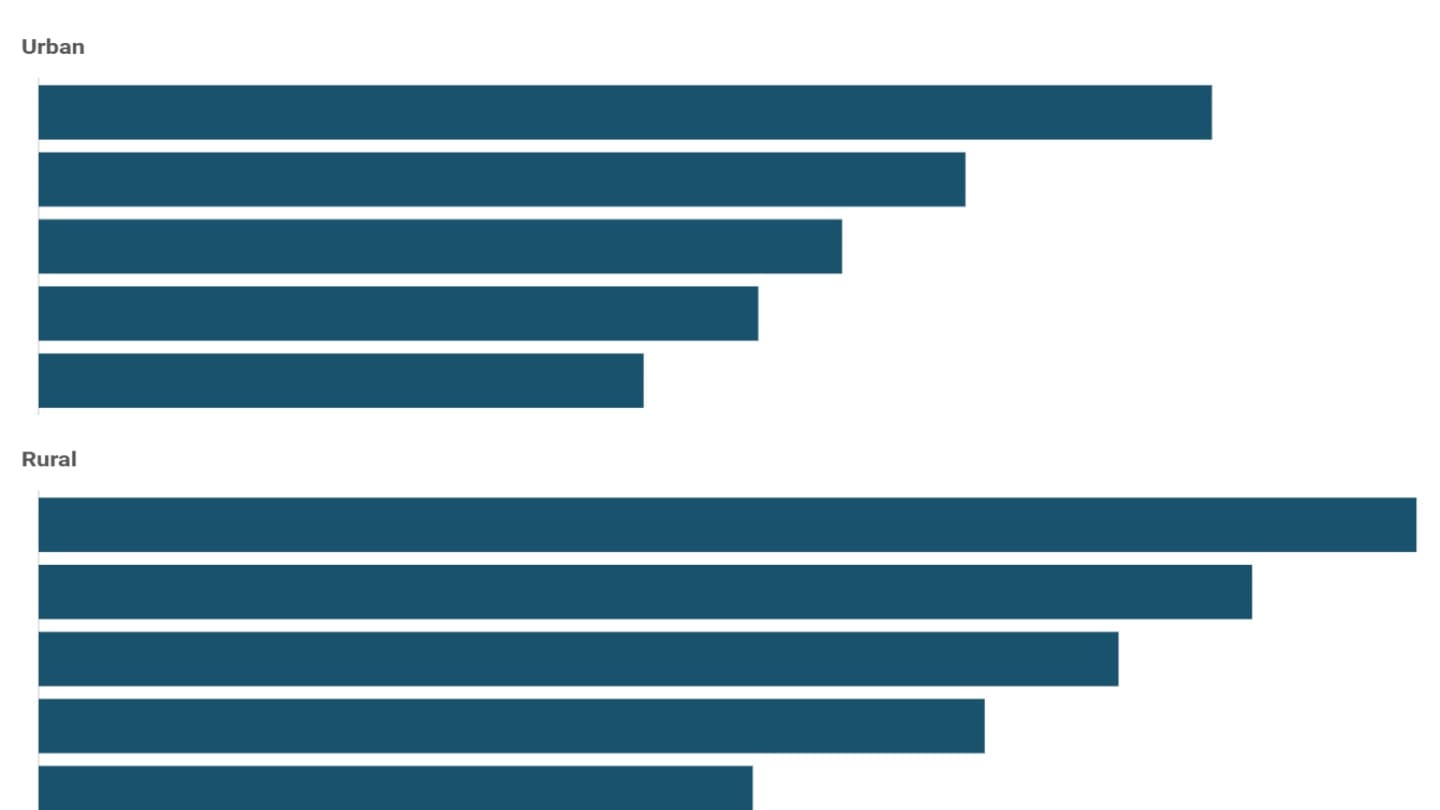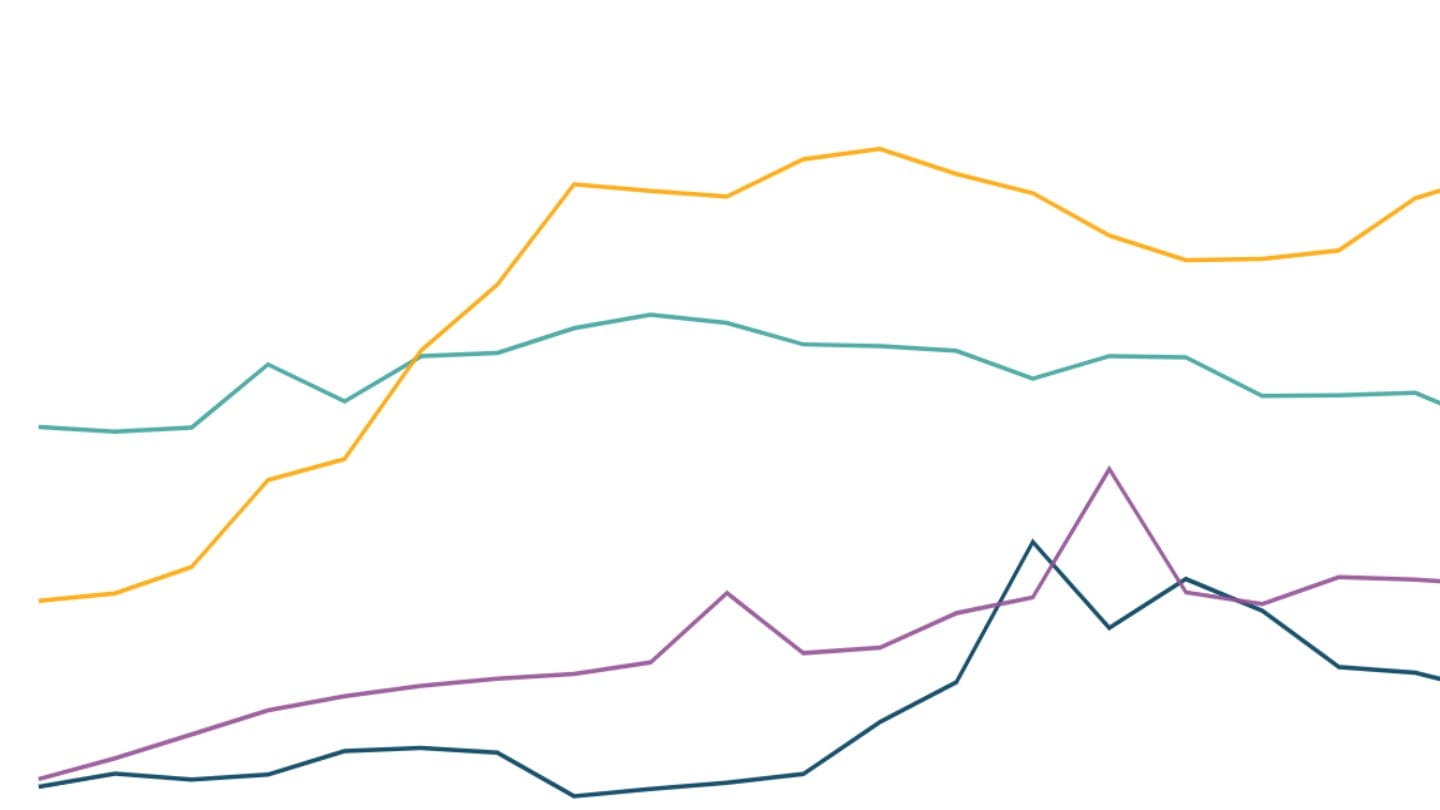Measuring employment and unemployment
What is work in Indian statistics, how is work captured, and who is defined as unemployed
What is work?
Information on employment in India and most countries is gathered by asking people about the work they did in a recent time period through household surveys.
From 1972 to 2012, India's Ministry of Statistics and Programme Implementation carried out large, nationally representative household surveys called the Employment and Unemployment surveys roughly every five years. Since 2017-18, India has switched over to the Periodic Labour Force Surveys[1] which track the size and characteristics of India's labour market every year by surveying more than 400,000 people in one annual cycle[2]. The International Labour Organisation uses Indian government data and does some modelling for international comparisons. DFI uses these three data sources.
The PLFS asks respondents about their activity status, which can be fit into three broad categories - namely employed, unemployed, and out of labour force. The employed are further divided by type of work (e.g. salaried), and those out of the labour force could be students, full time house workers. The question is open-ended, and trained enumerators convert their answers into a system of codes. This means that all work, including traditional hawkers, farm labourers and teachers, as well as new types of jobs - like being a driver through an aggregator app, or a food delivery person - are covered. It also means that both formal and informal employment is covered.
What is not counted is work that in economic terms is not considered productive. In Indian and international labour statistics, most activities that produce goods for self-use as well as for sale are considered as productive work[3]. So a farmer growing vegetables for the household to eat constitutes work, as does her selling those vegetables in the market.
But in terms of services, only those activities that produce an output which can be sold are considered work[4]. So transporting the harvested vegetables to the market for sale is work, but cooking those vegetables for the household members to eat, or the feeding of small children is not considered work. Whether this unpaid care and domestic work that is mostly performed by women should be counted as productive work is a widely debated topic in labour economics[5].
Measuring employment and unemployment
In Indian statistics, there are two ways of measuring employment. Workers are asked about their activities during the last 365 days (usual status method) or the last 7 days (current weekly status method).
When the reference period is one year, a person who worked for at least 30 days in the preceding 365 days is considered to be employed[6]. A person who looked for work or was available for work, but could not work for even 30 days in the preceding 365 days is considered to be unemployed. This method produced an unemployment rate of 3.2% in 2022-23 among India's working age population.
When the reference period is one week, a person who worked for at least one hour on at least one day during the seven days preceding the survey is considered employed. A person who looked for or was available for work for at least one hour during the week but did not work for even one hour during the week is considered to be unemployed. This method produced an unemployment rate of 5.2% as of 2022-23.
Taken together, this means that in 2022-23, 3.2% of people did not find work for even one month in the year, but 5.2% of people were not able to find work for even one hour in the preceding week.
That India has a higher unemployment rate in current weekly status than in the usual status could suggest that people who usually have some work during the year may not be employed at the time of survey due to seasonality of some occupations, and the lack of stability in others.
[1] The PLFS provides us with three key ratios or rates: the labour force participation rate, the worker population ratio, and the unemployment rate. Apart from this, it records labour incomes, hours spent at work, and other labour characteristics.
[2] PLFS began in 2017-18, and also releases quarterly findings for the urban labour market. Before the PLFS, the Employment-Unemployment Surveys carried out every five years were used to analyse India's employment situation.
[3] This definition follows from the System of National Accounts (2008), an internationally accepted statistical framework that is also used to define labour force and employment in PLFS and all NSS surveys on employment.
[4] Indian labour statistics have additional restrictions in their definition of work. The methodology of PLFS includes only the production of primary goods (the output from agriculture, mining, and allied activities) for self-consumption and the production of fixed assets for own-use such as a house inside the definition work. All other goods and all services (such as cooking food and childcare) fall outside the purview of work in the Indian framework of labour statistics.
[5] See work on this topic by ILO, OECD and UN Women
[6] Persons who worked for a relatively long part of the 365 days preceding the survey are considered to be employed in the principal status. Among the rest, those who worked for at least 30 days in the preceding 365 days were considered to be employed in a subsidiary status. The two together (principal + subsidiary) equal the number considered employed in the usual status.



